JUDGMENT
HOW WINNING LEADERS
MAKE GREAT CALLS
NOEL M. TICHY
AND
WARREN G. BENNIS
PORTFOLIO
PORTFOLIO
Published by the Penguin Group Penguin Group (USA) Inc., 375 Hudson Street, New York, New York 10014, U.S.A. Penguin Group (Canada), 90 Eglinton Avenue East, Suite 700, Toronto, Ontario, Canada M4P 2Y3 (a division of Pearson Penguin Canada Inc.) Penguin Books Ltd, 80 Strand, London WC2R 0RL, England Penguin Ireland, 25 St. Stephens Green, Dublin 2, Ireland (a division of Penguin Books Ltd) Penguin Books Australia Ltd, 250 Camberwell Road, Camberwell, Victoria 3124, Australia (a division of Pearson Australia Group Pty Ltd) Penguin Books India Pvt Ltd, 11 Community Centre, Panchsheel Park, New Delhi110 017, India Penguin Group (NZ), 67 Apollo Drive, Rosedale, North Shore 0632, New Zealand (a division of Pearson New Zealand Ltd) Penguin Books (South Africa) (Pty) Ltd, 24 Sturdee Avenue, Rosebank, Johannesburg 2196, South Africa
Penguin Books Ltd, Registered Offices: 80 Strand, London WC2R 0RL, England
First published in 2007 by Portfolio, a member of Penguin Group (USA) Inc.
Copyright Noel M. Tichy and Warren Bennis, Inc., 2007
All rights reserved
Handbook for Leadership Judgment is based on Judgment by Noel M. Tichy and Warren G. Bennis. Copyright Chris DeRose and Noel M. Tichy, 2007
LIBRARY OF CONGRESS CATALOGING IN PUBLICATION DATA
Tichy, Noel M.
Judgment : how winning leaders make great calls / Noel Tichy and Warren Bennis.
p. cm.
Includes bibliographical references and index.
ISBN: 978-1-1012-1654-5
1. Leadership. I. Bennis, Warren G. II. Title.
HD57.7.T496 2007
658.4'095dc22 2007027169
Without limiting the rights under copyright reserved above, no part of this publication may be reproduced, stored in or introduced into a retrieval system, or transmitted, in any form or by any means (electronic, mechanical, photocopying, recording or otherwise), without the prior written permission of both the copyright owner and the above publisher of this book.
The scanning, uploading, and distribution of this book via the Internet or via any other means without the permission of the publisher is illegal and punishable by law. Please purchase only authorized electronic editions and do not participate in or encourage electronic piracy of copyrightable materials. Your support of the authors right is appreciated.
To General Wayne Downing, a key leader in this book who unexpectedly passed away on July 18, 2007. Wayne led the creation of the modern-day Special Operations Forces; served as national director and deputy national security advisor for Homeland Security; and developed, taught, and held the position of distinguished chair at the Combating Terrorism Center, West Point. He also taught with us at the University of Michigan. He was a great friend, teacher, and patriot.
Noel and Warren made judgment calls
on every page of this book.
Without the wisdom of our in-house,
all-star coaching staff of
Patricia Stacey and Grace Gabe,
our winning calls
would have tumbled.
Contents
JUDGMENT: the essence of effective leadership. It is a contextually informed decision-making process encompassing three domains: people, strategy, and crisis. Within each domain, leadership judgments follow a three-phase process: preparation, the call, and execution. Good leadership judgment is supported by contextual knowledge of ones self, social network, organization, and stakeholders.
 Making Judgment Calls Is the Essential Job of a Leader
Making Judgment Calls Is the Essential Job of a Leader
- With good judgment, little else matters.
- Without good judgment, nothing else matters.
 Long-Term Success Is the Sole Marker of Good Judgment
Long-Term Success Is the Sole Marker of Good Judgment
- Good leaders sort the important from the trivial.
- They focus on getting the important calls right.
 Leaders Make the Calls and See to Their Execution
Leaders Make the Calls and See to Their Execution
- They manage relationships with key constituencies.
- They align and mobilize team members for support.
On November 1, 1997, when Michael Armstrong became chief executive officer, AT&T was a $130 billion company. It wasnt the powerhouse it had been for much of its hundred-plus-year history, but it had a stockpile of cash and plenty of opportunity. For the next eight years nothing seemed to work for AT&T, and Armstrongs long string of poor strategic judgments finally caught up with him, bringing his career to an unenviable end. In 2005 a nearly dead-broke AT&T was acquired by its former subsidiary, SBC, for a paltry $16.9 billion. Only its name survived on the combined company.
In 1999, when Carly Fiorina joined Hewlett-Packard (HP), she was hailed as a transformational leader. She was going to kick-start the company after years of mediocre performance. For the next six years, she stayed in the headlines, but she never really settled in at HP. She had a mixed scorecard. She had the courage and character to drive change, but did not relate well to the informal, nonhierarchical culture of HP. The optics were not good, nor was her popularity in HP. To make matters worse, HP missed more than half of its earnings targets during her tenure. The share value of HP stock dropped a jaw-dropping 58 percent during her tenure. On May 7, 2002, the acquisition of Compaq was completed. It was a long, bitter fight for Fiorina to get the acquisition closed, a $24 billion stock deal intended to mark her triumph as CEO. Instead the strategic judgment went bad in execution and helped set the stage for the HP boards messy political firing of her in early 2005.
In 2000, when A. G. Lafley took the reins at Procter & Gamble (P&G), the 160-year-old consumer-products company was in trouble. Shortly before Lafley was named CEO the company announced it would not meet its projected first-quarter earnings. The stock tanked in a matter of two short months, falling from its lofty peak of $116 in January 2000 to $60 in March of the same year, a 52 percent free fall.
Like Carly Fiorina at HP, Lafley was faced with the challenge of finding new markets and new avenues for growth at a mature company with a tired business model and lackluster operations. Like Fiorina, whose blockbuster acquisition of Compaq did not turn out well for her, Lafley eventually made a big acquisition. But P&Gs $57 billion purchase of Gillette was a much savvier business move and produced vastly superior results in its first few months as a P&G company.
Even before the acquisition, Lafley had succeeded in turning the company around, having taken the reins after the resignation of an unsuccessful seventeen-month CEO stint by Durk Jager. By the end of 2006, P&G was riding high. Its stock price was up an impressive 66 percent since 2000, versus a mere 10 percent for the Standard & Poors 500 index during the same period.
Just a few months after Lafley took over at P&G, Jeff Immelt walked into a very different situation at General Electric. GEs stock had suffered in the wake of the stock market crash of 2001, but Immelt was succeeding Jack Welch, dubbed manager of the century by Fortune magazine1 and BusinessWeek .2
Jack Welch had left GE after failing to complete the huge $47 billion acquisition of Honeywell in the final hours of his twenty-year reign. But the company was still a huge dynamo, and Immelts job was to find a way to keep generating more power. With revenues of $130 billion in 2000, Immelt would have to come up with $3.5 billion in new revenue every quarter to maintain the torrid 10 percent annual growth pace set by Welch. To do that, he took bold steps to reinvent the company. He shifted the companys primary business model to capitalize on emerging technologies and emerging markets. By mid-2007 the stock market was rewarding his efforts. Immelt had succeeded in delivering average growth of some 8 percent per year, no small feat for a $100 billion-plus juggernaut.

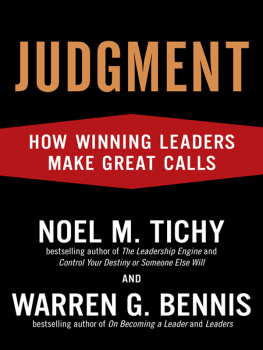
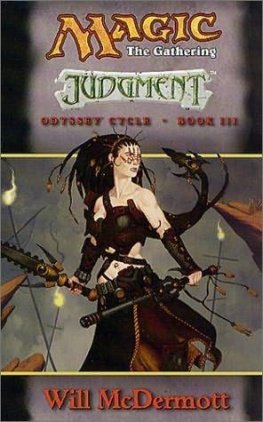

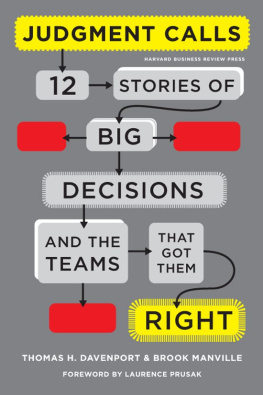
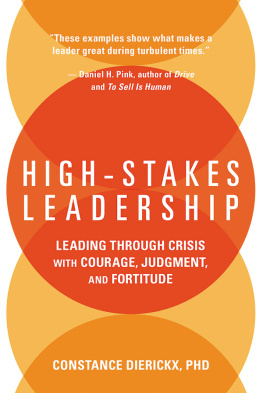
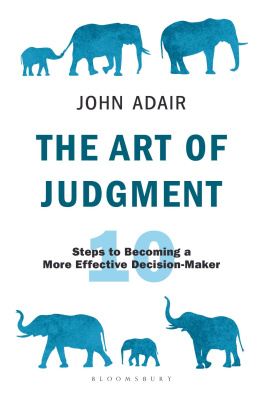


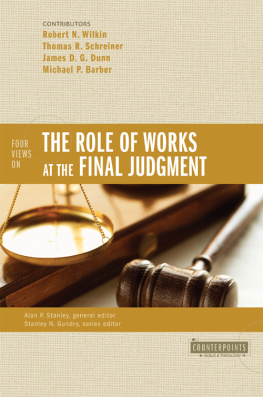
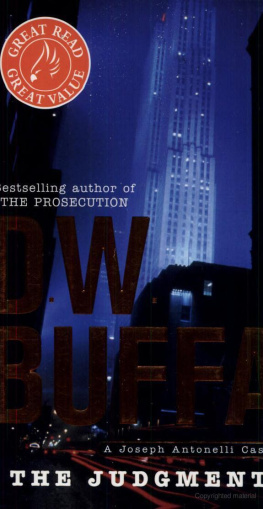
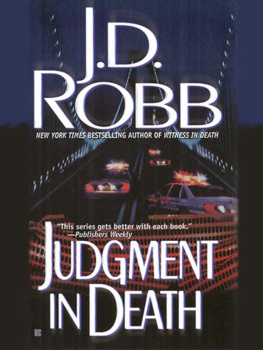


 Making Judgment Calls Is the Essential Job of a Leader
Making Judgment Calls Is the Essential Job of a Leader